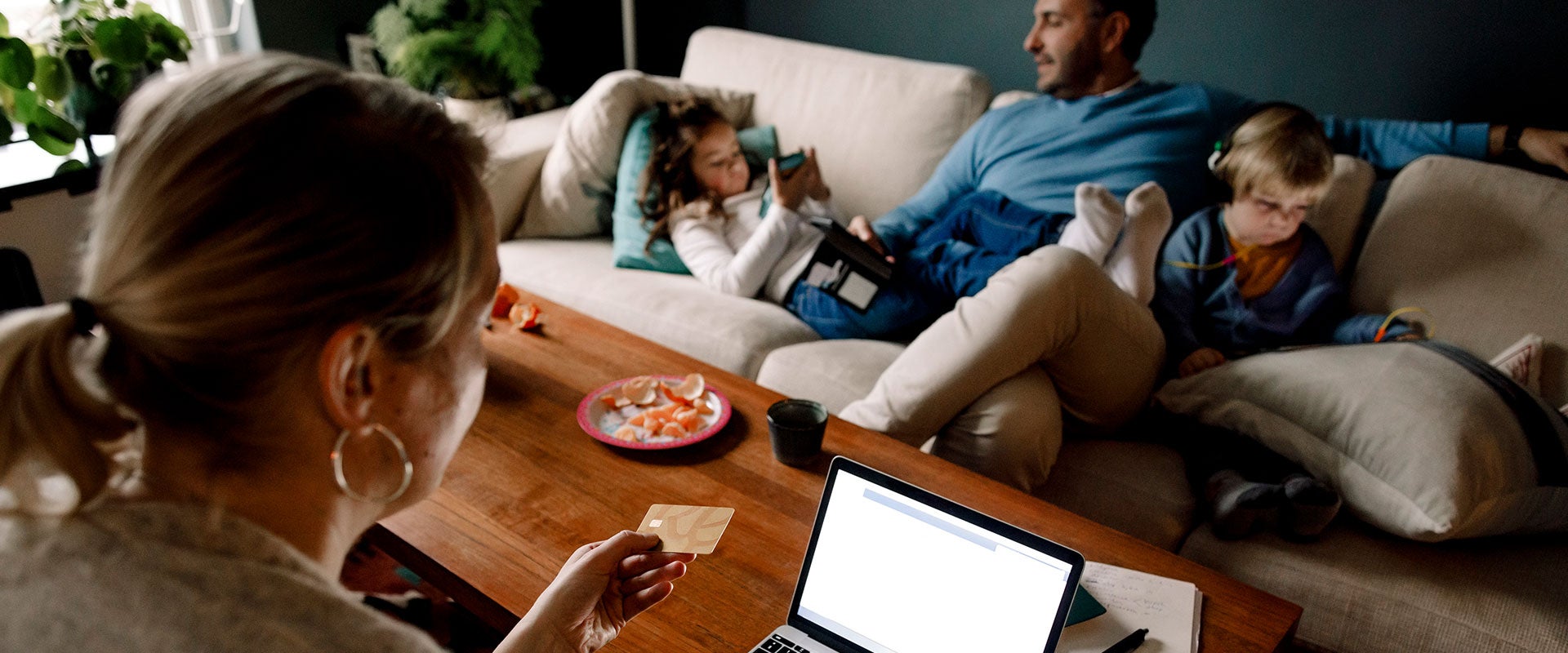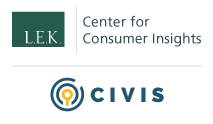

COVID-19 in the US: Consumer Insights for Businesses
Brought to you by L.E.K. Consulting's Center for Consumer Insights, in partnership with Civis Analytics
- Article


Brought to you by L.E.K. Consulting's Center for Consumer Insights, in partnership with Civis Analytics
In partnership with Civis Analytics, we’re publishing a series of insights on the consumer response to COVID-19. Our goal is to help our consumer-facing clients monitor sentiment and behaviors as they take shape during this unprecedented period. At the same time, we acknowledge that the pandemic is a humanitarian crisis first and foremost. We at L.E.K. Consulting extend our heartfelt sympathies to all who are affected by this crisis.
The coronavirus crisis has thrown us into uncharted economic territory. Still, one thing is certain: Consumer behaviors are changing significantly.
“COVID-19 in the U.S.: Consumer Insights for Businesses” is a series of insights reflecting the results of a recurring consumer pulse survey. Administered approximately every two weeks, the survey tracks the pandemic’s impact on consumer sentiment overall, as well as by segment, geography and product. Each edition offers an updated perspective on the current landscape and what the lasting impact is likely to be. To continue the discussion, please don't hesitate to contact us.
Edition 1 reflects survey results from March 18, 2020. The sample size of roughly 2,600 U.S. consumers is demographically representative of the general population.
In what is first and foremost a humanitarian crisis, we start by evaluating consumer sentiment across the country. How severe consumers perceive the outbreak to be in their geography is a key driver of their emotions and mindset, both of which ultimately drive spending patterns and other behaviors.
As of March 18, 2020, 89% of consumers believe their geography is affected to some degree by the outbreak. Only 11% of consumers perceive “no outbreak” in their area. Of the former 89%, consumers are roughly evenly split across different perceived severity ratings: limited, moderate, bad and critical. In future surveys, we can expect a shift toward the more severe end of the spectrum.
Another key indicator of sentiment is consumer outlook for the economy. Across all consumer geographies and perceived severity levels, consumers are pessimistic about the economy. The vast majority (~80% to 90%) expect a recession within the next year.
Next, we evaluate consumer travel spend — a sector hard hit from the very beginning of this crisis, and one that remains at the forefront of the news cycle.
Across all business and leisure travel categories tested, U.S. consumers self-report significant reductions in 2020 travel spend due to cancellations or avoidance, ranging from -50% to -75% of total planned spend.
Consumer outlook for travel spend post-outbreak is also pessimistic. While 30%-40% of consumers expect travel spend to rebound to pre-outbreak levels, a greater portion of consumers expect spend to remain dampened even after the outbreak is contained. Only a small portion of consumers expect spend to exceed pre-outbreak levels once the virus is contained.
The pessimism expressed by consumers may be influenced by a high level of uncertainty regarding what the future holds, as well as a high volume of negative press coverage related to travel and transport.
Beyond travel, consumer spend across a wide range of other categories has also changed significantly as a result of the outbreak.
Many categories, similar to travel, are seeing a decline in average monthly spend. Dining outside the home, fitness outside the home, entertainment outside the home and consumer electronics have experienced the largest declines. Other categories negatively impacted by the outbreak so far include taxi/ridesharing, takeout/delivery and nonessentials (e.g., beauty, fashion, household durables).
Despite this turmoil, there are many bright spots. For example, at-home fitness and medical supplies have seen a strong boost in average monthly spend as a result of increased consumer time at home and restrictions on life outside the home. Groceries (both nonperishable and perishable), pet products (consumers are happily embracing more time with their pets) and at-home entertainment are also benefiting, although to a lesser degree.
As social norms and restrictions evolve in response to COVID-19, consumers are increasingly adjusting their broader behaviors to limit their own exposure and protect others.
Naturally, consumers are reporting significant increases in at-home activities, particularly cooking at home, watching television, browsing social media and exercising at home.
Consumers are limiting activities with high exposure risk due to government restrictions and establishment closures, as is the case with bars/restaurants, gyms and events (e.g., the South by Southwest Conference). Also, self-imposed social distancing is driving a decline in traffic to public places (e.g., malls and stores) and visits with friends and family.
Where employees work is also shifting significantly away from offices, shared co-working spaces and public spaces toward the home. Not surprisingly, online spend is also on the rise, growing 10%-30% across grocery and non-grocery purchases.
It remains uncertain which, if any, of these behavioral changes will persist once the COVID-19 outbreak is contained. In the near term, these changes create a need for brands to explore how they can meet consumers where they are and engage with them in novel ways. Whether it is through a live digital fitness class or expanded social media activity, brands are finding opportunities to maintain engagement.
Stay tuned for additional analysis on what “new normal” spending patterns might look like across consumer categories once the outbreak is contained, as well as other insights from this first survey (March 18, 2020).
As a reminder, we’ll be conducting recurring consumer pulse surveys approximately every two weeks to continually monitor consumer attitudes and behaviors.
We understand that many of our clients are facing new disruptions and increased uncertainty in their business outlook. In addition to this work, all of our sector teams are preparing insights on how the latest developments are shifting consumer attitudes, international business flows, commodities pricing and commercial priorities. Some of these changes are likely to endure well beyond when the current pandemic has passed. While many of these changes will create challenges, there will also be new opportunities that emerge. We will be sharing our ideas and insights through our website and other media over the coming days and weeks.
We wish good health to you and your loved ones, and we look forward to continuing to support our clients through this difficult time.